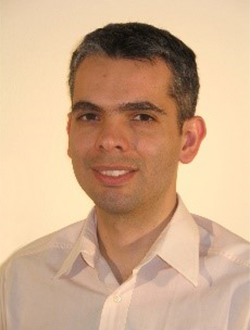
Associate Professor Marco Jose Da Silva
Department of Electrical and Computer Engineering
Federal University of Technology-Parana, Brazil
mdasilva@ieee.org
Marco Jose da Silva received the Dr.-Ing. degree in Electrical Engineering from Dresden University of Technology, Germany, in 2008. From 2004 to 2009 he was a Research Associate with Helmholtz-Zentrum Dresden-Rossendorf, Germany. In Year 2010 he joined the Federal University of Technology-Parana (UTFPR), Brazil, as Assistant Professor. Since 2013 he has been an Associate Professor (tenured) at the Department of Electrical Engineering (CPGEI) and since 2017 he has also been co-Director of the Multiphase Flow Center (NUEM) at UTFPR. In September 2022 he will join the Johannes Kepler University Linz, Austria as Professor and Head of Institute for Measurement Technology. His research interests include measurement technology, sensors, and instrumentation applied to industrial processes and in special to multiphase flow monitoring. He is the author/co-author of over 200 scientific journal and conference papers and was granted 5 patents. Dr. Da Silva is Associate Editor-in-Chief of IEEE Sensors Journal and is with the Editorial Board of Measurement Science and Technology.
Title: Wire-mesh sensors: principles and applications for multiphase flow monitoring
Wire-mesh sensors (WMS) represent a hybrid solution between tomographic flow imaging and intrusive probes which have been widely applied for the investigation of different types of multiphase flow, but largely in gas-liquid flows. WMS can produce cross-sectional images of phase distribution at high temporal and spatial resolution. Advanced data processing is usually applied to extract derived flow parameters. In this talk, I will review the operating principles of this imaging flow modality (conductance, capacitance and dual modes) as well as I will show and discuss different applications WMS was successfully applied to. Some variations on the original geometry/principle will also be discussed along with some current trends for the further development and optimization of this versatile measurement technique.